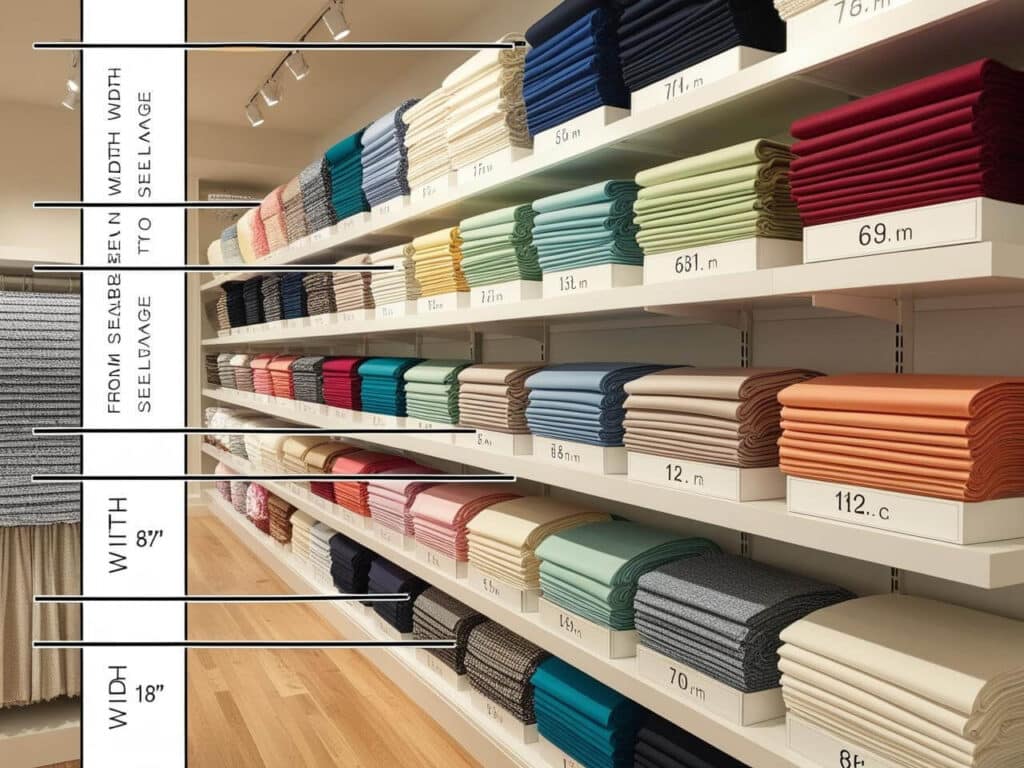Introduction
When buying fabric for sewing, quilting, or upholstery, one of the most important factors to consider is fabric width. But what exactly does width of fabric (WOF) mean, and how does it affect your project?
In simple terms, fabric width refers to the measurement from selvage to selvage—the edges of the fabric roll. Choosing the right width can save fabric, reduce seams, and improve efficiency when cutting patterns.
Over the years, I’ve learned that understanding fabric width makes a big difference in selecting the right amount of material. In this guide, you’ll learn:
✔ What fabric width means & how it’s measured.
✔ Standard fabric widths across different industries.
✔ How to determine the best width for your sewing or design project.
Let’s break down everything you need to know about fabric width!
What is Width of Fabric? (Definition & Basics)
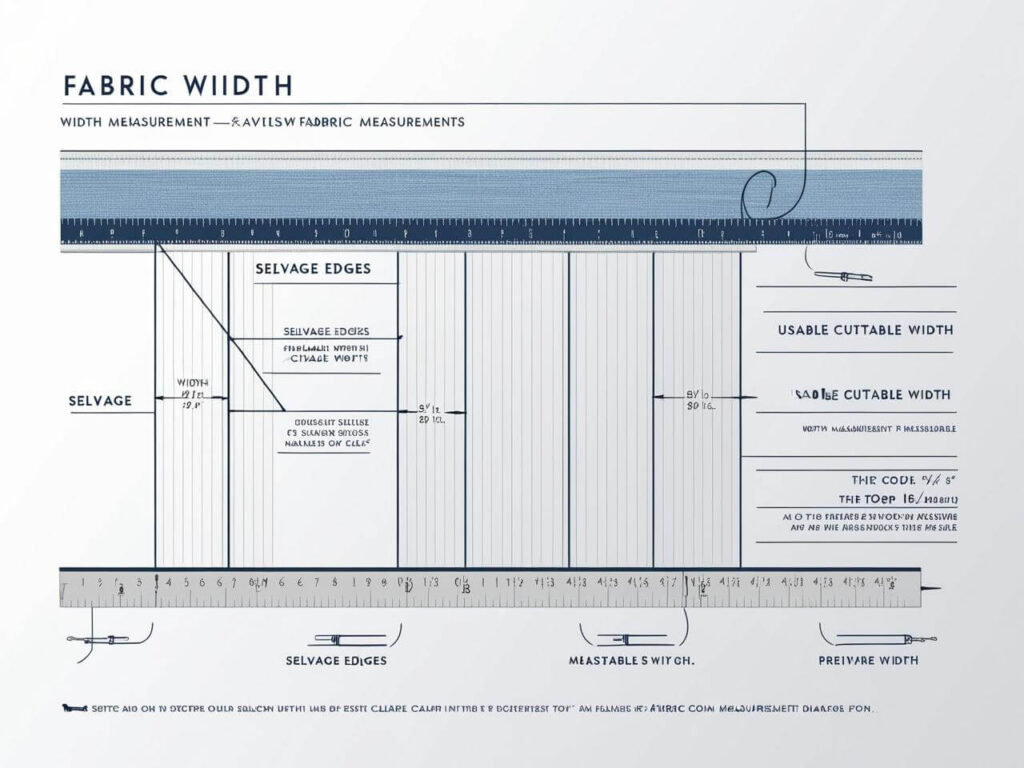
The width of fabric (WOF) refers to the measurement from selvage to selvage, which determines how much usable material is available for a project. Fabric width varies depending on the type of fabric, intended use, and industry standards.
🔹 Key Fabric Width Terminology
✔ Selvage (or Selvedge): The tightly woven edges that prevent fabric from fraying.
✔ WOF (Width of Fabric): The total distance from one selvage edge to the other.
✔ Cuttable Width: The portion of fabric between the selvages that can be used for patterns.
🔹 Why Fabric Width Matters
✔ Affects Fabric Consumption – A wider fabric roll means fewer seams and less waste.
✔ Determines Project Feasibility – Some patterns require specific fabric widths.
✔ Industry-Specific Standards – Different industries, such as quilting, fashion, and upholstery, use different fabric widths.
Standard Fabric Widths by Type (Comparison Table)
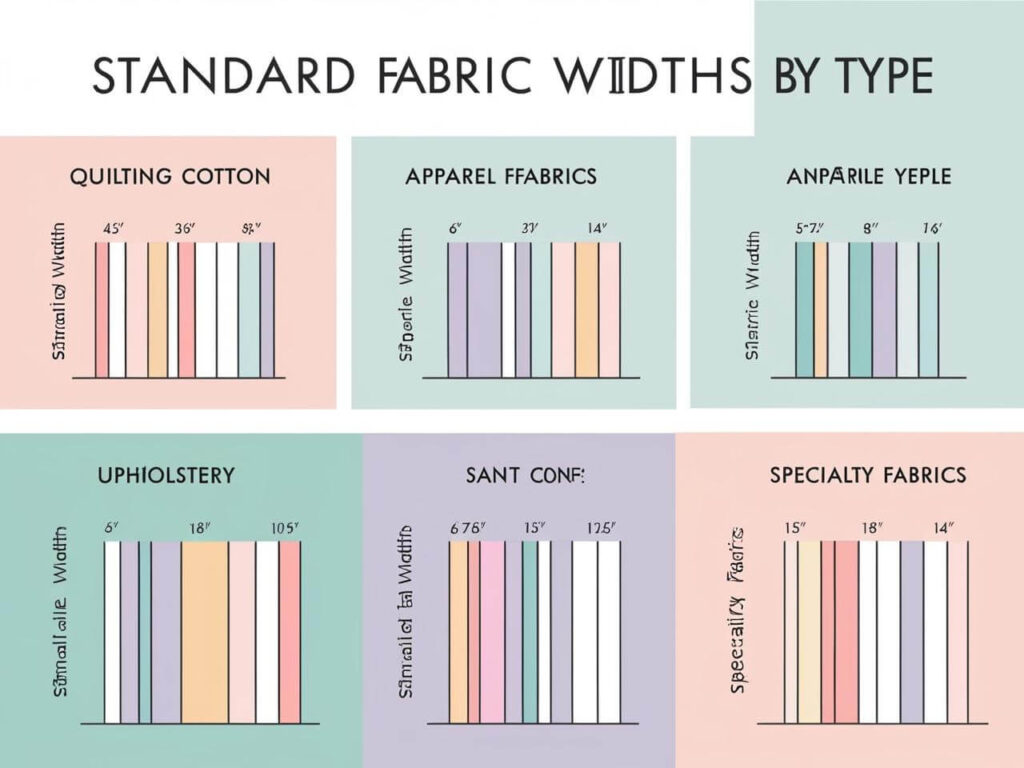
The width of fabric varies depending on the type of material and its intended use. Here’s a breakdown of common fabric widths across different categories.
🔹 Common Fabric Widths
| Fabric Type | Common Widths (inches) |
| Quilting Cotton | 44″ – 45″ |
| Apparel Fabrics | 45″, 54″, 60″ |
| Upholstery Fabric | 54″ – 60″ |
| Home Décor Fabrics | 48″ – 60″ |
| Specialty Fabrics (Canvas, Linen, Velvet) | 72″ – 108″ |
🔹 Key Fabric Width Guidelines
✔ Quilting Cotton: Typically 44″ to 45″ wide, perfect for quilt blocks and patchwork.
✔ Apparel Fabrics: Most clothing fabrics are available in 45″, 54″, or 60″ widths, allowing for pattern placement.
✔ Upholstery Fabrics: Usually 54″ to 60″ wide, making them suitable for furniture projects.
✔ Specialty Fabrics: Fabrics like canvas or velvet can be up to 108″ wide for larger projects like draperies and furniture upholstery.
How to Measure Fabric Width (Step-by-Step Guide)
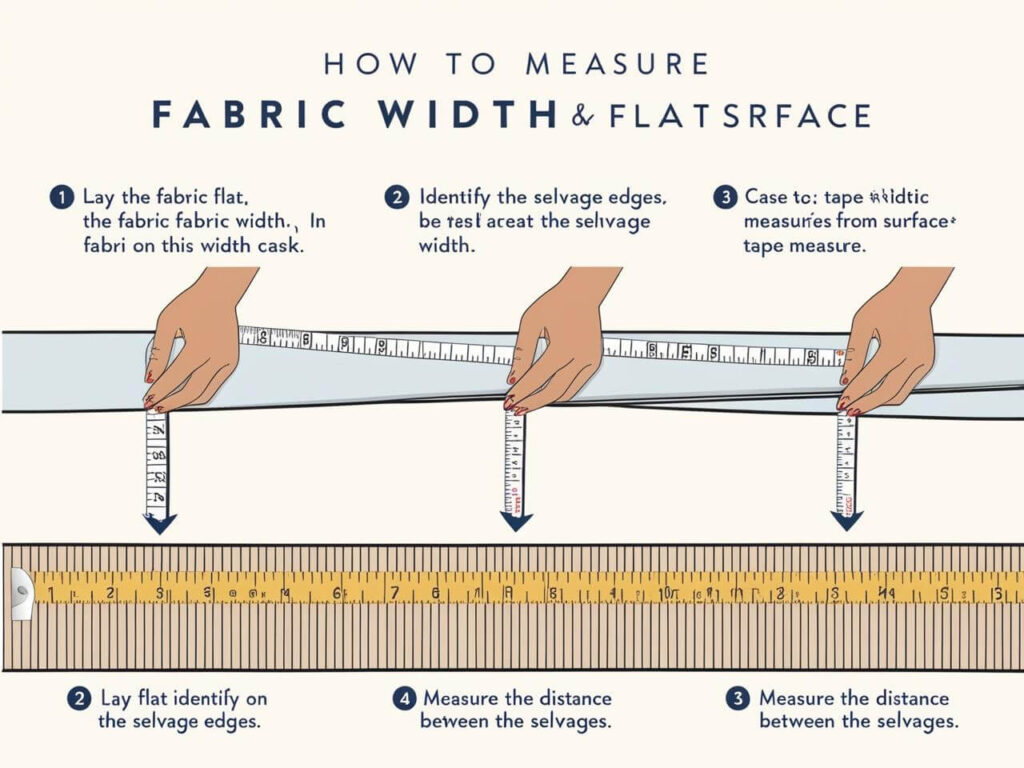
Measuring the width of fabric is a simple but essential task, especially when you need to plan a project accurately. Here’s how to measure fabric width from selvage to selvage:
🔹 Step-by-Step Guide to Measuring Fabric Width
1️⃣ Lay the Fabric Flat:
- Place the fabric on a flat surface (like a cutting mat or table) with the selvage edges parallel.
- Smooth out any wrinkles for an accurate measurement.
2️⃣ Use a Measuring Tape:
- Take a measuring tape or ruler and measure the distance across the fabric from one selvage to the other.
- This is the width of fabric (WOF).
3️⃣ Check Fabric Bolts in Stores:
- If you’re buying fabric from a store, you can check the width listed on the fabric bolt label, which typically indicates the standard width for that material.
4️⃣ For Folded Fabric:
- If the fabric is folded in half, simply double the visible width to determine the full width.
🔹 Pro Tip:
To avoid mistakes, measure at several points across the fabric to ensure consistency, especially if the fabric is not perfectly cut.
How to Measure Fabric Width (Step-by-Step Guide)
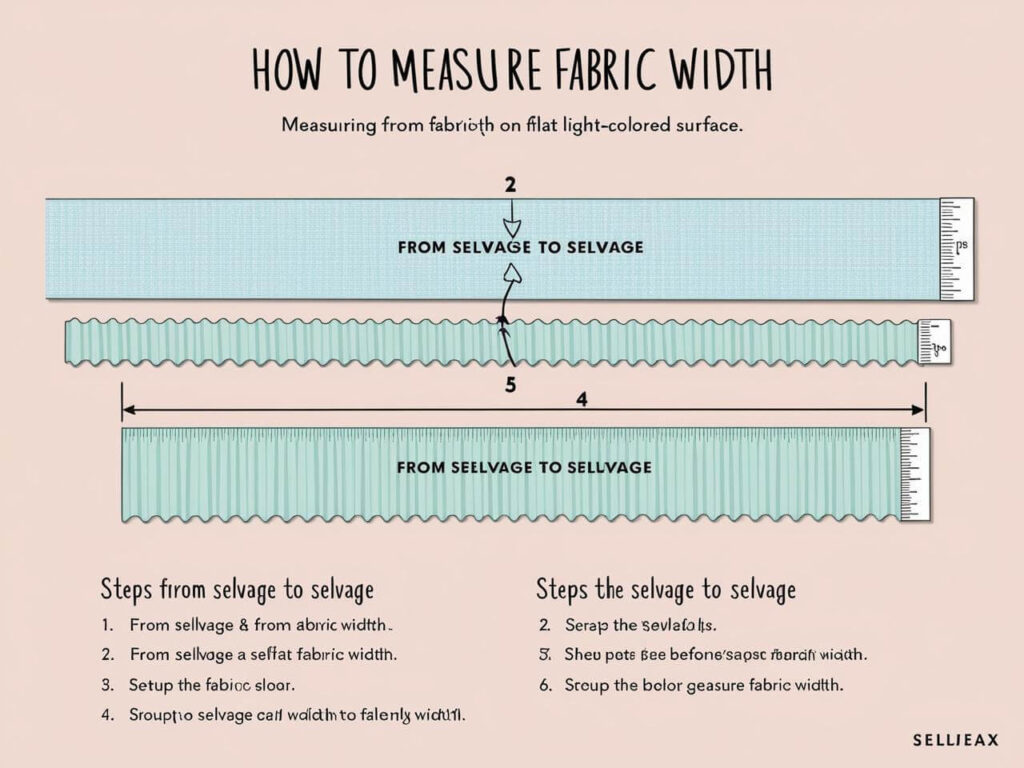
Measuring the width of fabric is a simple but essential task, especially when you need to plan a project accurately. Here’s how to measure fabric width from selvage to selvage:
🔹 Step-by-Step Guide to Measuring Fabric Width
1️⃣ Lay the Fabric Flat:
- Place the fabric on a flat surface (like a cutting mat or table) with the selvage edges parallel.
- Smooth out any wrinkles for an accurate measurement.
2️⃣ Use a Measuring Tape:
- Take a measuring tape or ruler and measure the distance across the fabric from one selvage to the other.
- This is the width of fabric (WOF).
3️⃣ Check Fabric Bolts in Stores:
- If you’re buying fabric from a store, you can check the width listed on the fabric bolt label, which typically indicates the standard width for that material.
4️⃣ For Folded Fabric:
- If the fabric is folded in half, simply double the visible width to determine the full width.
🔹 Pro Tip:
To avoid mistakes, measure at several points across the fabric to ensure consistency, especially if the fabric is not perfectly cut.
Why Fabric Width Matters in Different Industries
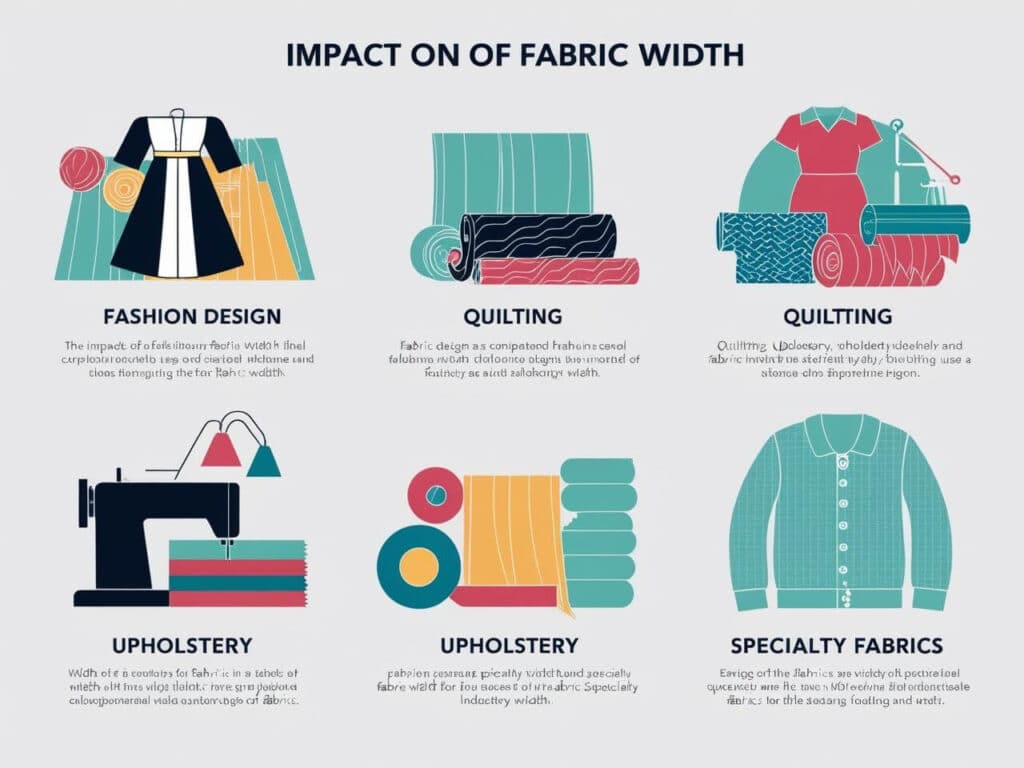
The width of fabric can significantly impact how much fabric you need for a project and how patterns fit. Here’s why fabric width is important in different industries:
🔹 Why Fabric Width Matters in Different Industries
1️⃣ Sewing & Fashion Design
✔ Impact on Pattern Layout: Fabric width determines how patterns are placed and how many pieces fit.
✔ Design Efficiency: Wider fabric reduces the number of seams required for large patterns.
✔ Fabric Waste: A wider fabric roll allows designers to maximize fabric usage with fewer wasted scraps.
2️⃣ Quilting
✔ Standard WOF for Quilting: Most quilting cotton fabrics are 44″ to 45″ wide, which is ideal for creating blocks and patchwork designs.
✔ Seam Placement: The width is crucial when aligning strips and blocks to avoid running out of fabric.
✔ Fabric Efficiency: Quilters often use wider fabric to cut larger pieces without needing to join smaller widths.
3️⃣ Upholstery & Home Décor
✔ Seam Placement in Upholstery: For furniture, fabric width impacts how many panels are needed for covering cushions and chairs.
✔ Cost Efficiency: Wider fabrics in home décor help avoid seam creation for large areas like sofas or draperies.
✔ Customization: Many upholstery fabrics are available in 60″ or more to accommodate bigger projects like curtains and slipcovers.
4️⃣ Specialty Fabrics (Canvas, Velvet, etc.)
✔ Larger Projects: Specialty fabrics like canvas and velvet are often 72″ to 108″ wide to accommodate large, bulky projects such as outdoor furniture or large draperies.
✔ Use in Fashion & Industrial Applications: Wider specialty fabrics allow designers to create oversized patterns, reducing the need for seams and improving aesthetic appeal.
Why Fabric Width Matters in Different Industries
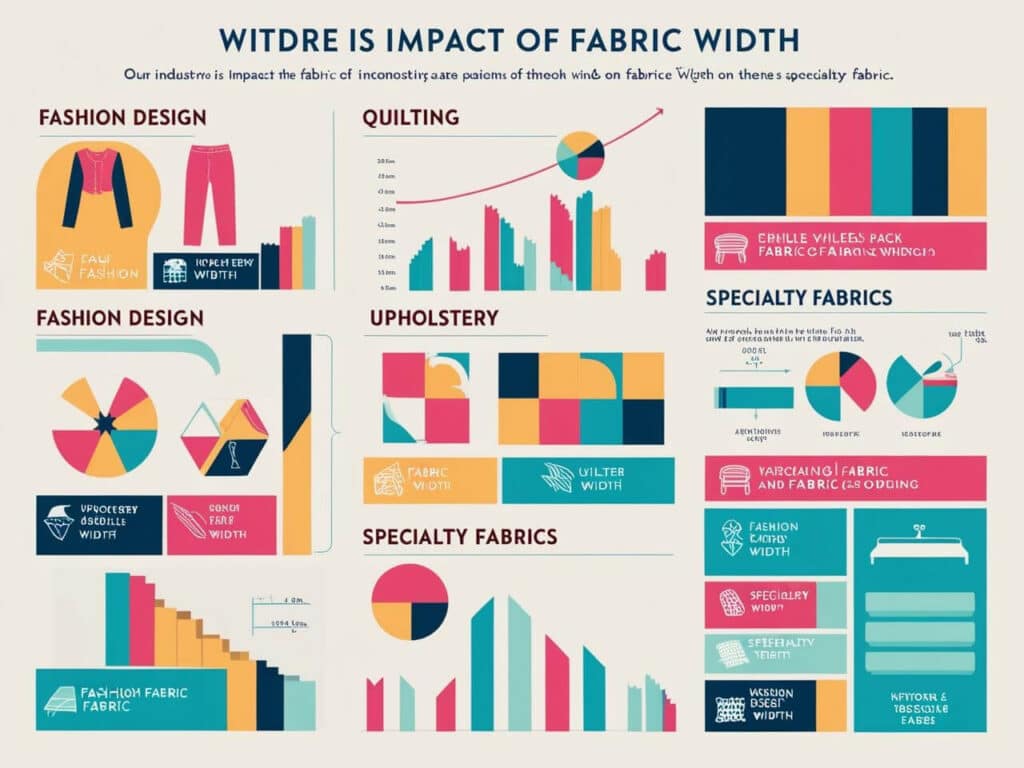
The width of fabric can significantly impact how much fabric you need for a project and how patterns fit. Here’s why fabric width is important in different industries:
1️⃣ Sewing & Fashion Design
✔ Impact on Pattern Layout: Fabric width determines how patterns are placed and how many pieces fit.
✔ Design Efficiency: Wider fabric reduces the number of seams required for large patterns.
✔ Fabric Waste: A wider fabric roll allows designers to maximize fabric usage with fewer wasted scraps.
2️⃣ Quilting
✔ Standard WOF for Quilting: Most quilting cotton fabrics are 44″ to 45″ wide, which is ideal for creating blocks and patchwork designs.
✔ Seam Placement: The width is crucial when aligning strips and blocks to avoid running out of fabric.
✔ Fabric Efficiency: Quilters often use wider fabric to cut larger pieces without needing to join smaller widths.
3️⃣ Upholstery & Home Décor
✔ Seam Placement in Upholstery: For furniture, fabric width impacts how many panels are needed for covering cushions and chairs.
✔ Cost Efficiency: Wider fabrics in home décor help avoid seam creation for large areas like sofas or draperies.
✔ Customization: Many upholstery fabrics are available in 60″ or more to accommodate bigger projects like curtains and slipcovers.
4️⃣ Specialty Fabrics (Canvas, Velvet, etc.)
✔ Larger Projects: Specialty fabrics like canvas and velvet are often 72″ to 108″ wide to accommodate large, bulky projects such as outdoor furniture or large draperies.
✔ Use in Fashion & Industrial Applications: Wider specialty fabrics allow designers to create oversized patterns, reducing the need for seams and improving aesthetic appeal.
FAQs (People Also Ask)
Here are answers to some of the most frequently asked questions about fabric width (WOF), based on Google’s “People Also Ask” section.
❓ What is the standard fabric width?
✔ The standard fabric width is typically 44″ to 45″ for quilting cotton, but can range from 45″ to 108″ depending on the fabric type and use.
❓ How do I know the width of fabric?
✔ Measure from selvage to selvage (edge-to-edge) using a measuring tape or ruler. If you’re purchasing from a store, the fabric bolt label will indicate the width.
❓ Is fabric width the same as fabric length?
✔ No, fabric width is the measurement across the fabric, from one selvage to the other, while fabric length is the distance from the roll’s edge to the other end (typically measured in yards or meters).
❓ How do I calculate fabric width for a project?
✔ To calculate fabric width, simply measure the distance from selvage to selvage. For large projects like upholstery, check the fabric bolt for standard measurements.
❓ What is the best fabric width for quilting?
✔ The best width for quilting is 44″ to 45″ as it accommodates most quilt blocks and patchwork designs.
Understanding Fabric Width for Smarter Fabric Shopping
The width of fabric (WOF) is a crucial factor when selecting the right material for your sewing, quilting, or upholstery projects. By understanding standard fabric widths, you can plan your projects more efficiently, avoid unnecessary seams, and ensure you have the right amount of fabric.
✔ Key Takeaways:
- The standard fabric width varies depending on the fabric type and its intended use.
- Wider fabrics reduce fabric waste and seam requirements for larger projects.
- Always check the fabric width before purchasing to ensure it suits your project.
✔ Final Tips:
- For quilt blocks, go for 44″ – 45″ wide fabric.
- For upholstery or home décor, choose 54″ to 60″ wide fabric.
- Always measure fabric width yourself if the bolt label is unclear.
Final Thoughts
Understanding fabric width empowers you to make better fabric choices, helping you create more polished projects with fewer resources. Whether you’re designing clothing, quilting, or upholstering furniture, choosing the right fabric width ensures that your project will come together smoothly
